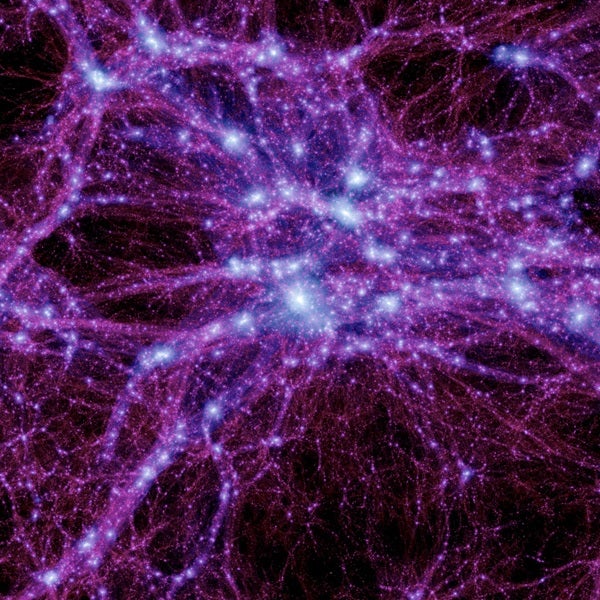Astronomers build computer simulations to model the universe’s evolution and learn about its invisible constituents. Such simulations show how filaments of unseen dark matter lace the cosmos in a weblike pattern, with luminous stars and galaxies sitting atop that skeleton. // Credit: Boylan-Kolchin, et al. (2009)
In September’s article “Astronomers reveal the universe’s hidden structure,” author Steve Nadis described the scaffolding of invisible material — called dark matter — that forms the filamentary structure of the cosmos. Normal matter — like stars and gas — makes up only about 15 percent of the universe’s mass; this material follows the weblike distribution of dark matter.
Much of scientists’ information about cosmic structure comes from complex computer simulations. In these models, they input dark matter, regular matter, and a mysterious force called dark energy — along with the laws of physics — and simulate evolution across billions of years. These simulations show that a filamentary pattern of dark matter weaves through the universe, which recent observations echo.
Below are a couple examples of these structure simulations.
The Dark Energy Universe Simulation group modeled cosmic structure evolution from about 13.7 billion years ago to today (the universe is 13.8 billion years old). The brightness corresponds to dark matter density; the color corresponds to the velocity of dark matter (material moving away from us is redder while material moving closer to us is bluer). // Credit: DEUS consortium
The Millennium II simulation used 10 billion particles to follow cosmic structure evolution starting from about 13.6 billion years ago to today. This video shows a flythrough of today’s universe and the luminous normal matter that follows the dark matter distribution. // Credit: Boylan-Kolchin, et al. (2009)










